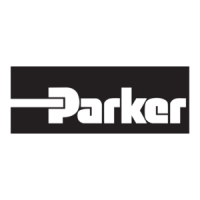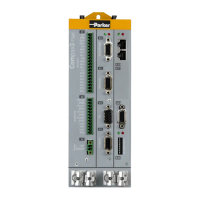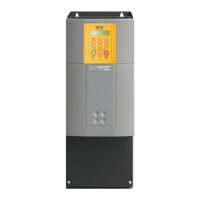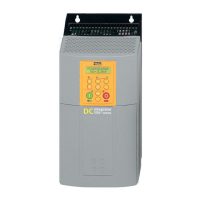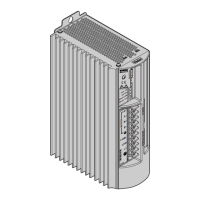Setting up Compax3 C3I22T11
220 192-120114 N5 C3I22T11 June 2008
Prerequisites for the automatic commutation
A movement of the motor must be permitted. The movement actually occurring
depends greatly on the motor (friction conditions) itself, as well as on the load
moved (inertia).
Applications requiring a motor brake, i.e. applications where active load torques
are applied at the motor (e.g. vertical actuator, slopoe) are not permitted.
Due to the function principle, high static friction or load torques will deteriorate
the result of automatic commutation.
When performing automatic commutation, a motion of at least ±180° must be
electically possible (no mechanic limitation)! The implemented automatic commu-
tation function with motion cannot be used for applications with limit or reversal
switches.
With the exception of missing commutation information, the controller/motor com-
bination is configured and ready for operation (parameters correctly assigned for
the drive/linear motor). Feedback direction and effective direction of the field of
rotation must be identical (automatic commutation performed in the MotorMana-
ger).
Course of the automatic commutation function
If "automatic commutation with movement" is selected as source of commuttion,
the automatic commutation sequence runs once if the power stage is enabled. If
the power stage is enabled or disabled afterwards, the automatic commutation will
be left out. If an error occurs during the execution, the automatic commutation is
aborted. A new "attempt to enable" the power stage will trigger a new automatic
commutation.
Function principle of the automatic commutation with movement
The implemented method with movement is based on the sinusoidal dependence
of the provided motor currents and the resulting movement on the effective com-
mutation error. The acceleration performed by the motor (-> movement) in the
event of constantly maintained current is a measure for the actual change in the
commutation angle in the way that it disappears upon a change of exactly 0° and
is, for other angles, the acceleration and its direction in dependance of the sign and
value of the angular error (-180° .. 180°).
Acceleration torque depending on the commutation error.
Δε:
Commutation error
Μ/Μμαξ
normalized acceleration torque
